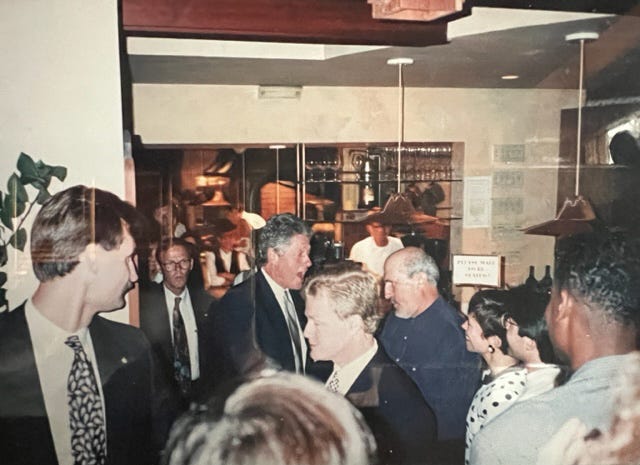A Brief History of Chez Panisse in Four Parts
In 2010 Alice Waters asked me to write the text for a book celebrating the 40th anniversary of Chez Panisse, which came out the next year as 40 Years of Chez Panisse: The Power of Gathering / Alice Waters and Friends. I wasn’t an innocent bystander; I’d been a member of the board of the directors that managed the restaurant since it was established in 1975, and still am. I wrote one chapter each for the Seventies, Eighties, Nineties, and 2000s, centering each on a single incident—the opening in 1971, a table full of coke dealers in the 1980s, Bill Clinton showing up one night in the 1990s, a dinner to mark a friend’s death in the 2000s. The publisher said the book had to be in Alice’s voice, so what I wrote, aside from a few snippets scattered around with the memories and comments of dozens of others, was never published. I’ll be running the chapters weekly, adding dates for those who have died since I wrote, over the next month. I still recognize the place as it was in these pages; I hope others do too.
Part Three: The Nineties
For years, Alice had talked about Chez Panisse as a school. Certainly, given the people who passed through the kitchens, who ran the floors, who waited the tables, and left to start their own places—from Suzy Nelson’s Fourth Street Grill in Berkeley in 1979 to Charlie Halowell’s Pizzaiolo in Oakland in 2006—it had always been a kind of school. Sometimes Alice argued for closing the restaurant as such and turning it into a school. It would be an experimental way-station that would teach values—locally and organically raised fruits, vegetables, and animals, sustainable and organic agriculture, seasonal cooking, the marriage of health and pleasure—and its effect would spread all over the world. But in a way, in the 1990s, that was the story of the restaurant—which had never taken out an advertisement or franchised its operation or licensed its name, or opened a spinoff in Las Vegas or Singapore or Dubai or even close to home in the Napa Valley, which stayed in place in its own stretched and remodeled and still one-piece Shattuck Avenue box.




